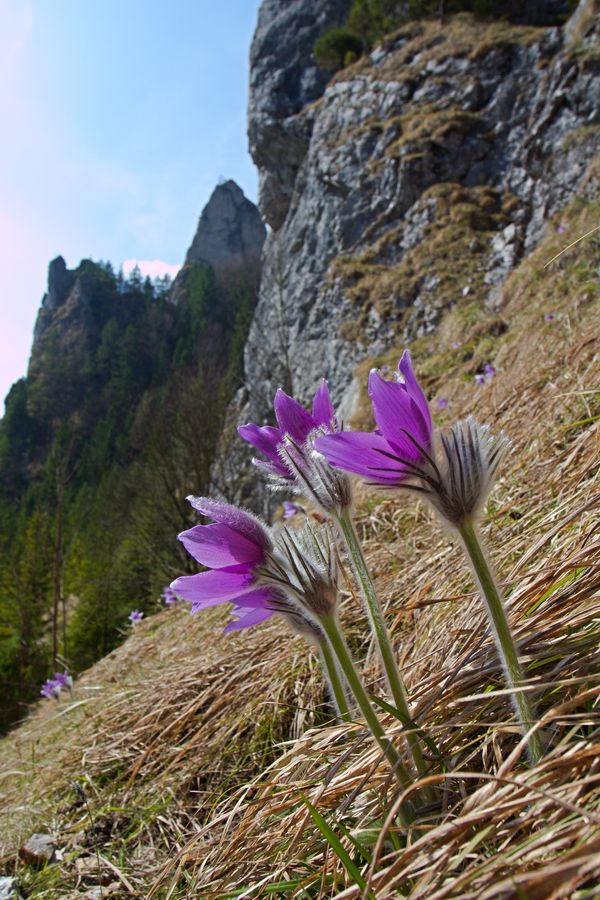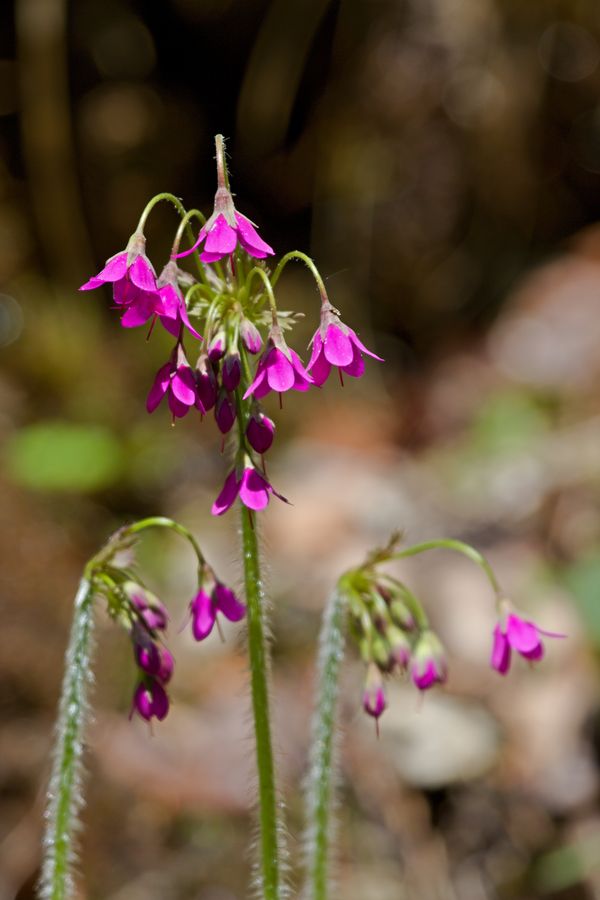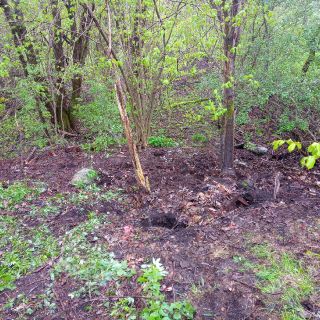Tabuľa 8 – Z rastlinnej ríše
Svet rastlín v oblasti Národného parku Malá Fatra je bohatý. Medzi vyššími rastlinami nájdeme viac ako 1100 druhov, viaceré z nich sú chránené. Sú medzi nimi aj tzv. relikty. Je to očianka stopkatá (Euphrasia stipitata), alchemilka Sojáková (Alchemilla sojakii), jarabina Margittaiova (Sorbus margittaiana) a alchemilka panenská (Alchemilla virginea) Tieto rastliny nenájdeme nikde vo svete, rastú len v Malej Fatre.
K pomerne nápadným rastlinám, ktoré môžeme obdivovať na rôznorodých stanovištiach patrí 6 druhov rastlín európskeho významu. Aj pre ich ochranu bolo územie Krivánskej Fatry zaradené do sústavy NATURA 2000. Známym je poniklec slovenský (Pulsatilla slavica). Kvitne skoro na jar. Jeho kvety s modrofialovými kalichmi môžeme obdivovať priamo zo Zbojníckeho chodníka v Tiesňavách. Pozoruhodnou rastlinou je prilbica tuhá moravská (Aconitum firmum subsp. Moravicum). Obľubuje horské prameniská. Prilbica obsahuje silné alkaloidové jedy, čo sa v minulosti využívalo v travičstve.
Neprehliadnuteľnou skupinou sú orchideje. Málo kto tuší, že v relatívne chladnej oblasti Malej Fatry rastie až 40 druhov a poddruhov, čo je polovica všetkých druhov Slovenska. Známou, avšak skryto rastúcou je orchidea s najväčším kvetom – črievičník papučkový (Cypripedium calceolus). Natrafíme na ňu v presvetlených bučinách. Lesnou orchideou s výraznou arómou, pomocou ktorej láka opeľovačov (nočný hmyz) je vemenník dvojlistý (Platanthera bifolia). Medzi lesné druhy patrí hniezdovka hlístová (Neottia nidus-avis). Táto rastlina neobsahuje zelené farbivo – chlorofil. Bohatstvo orchideí je najzreteľnejšie na lúkach s tradičným obhospodarovaním. Nájdeme tu vstavač mužský (Orchis mascula), pavstavač hlavatý (Traunsteinera globosa) vstavačovce Fuchsove (Dactylorhiza fuchsii), päťprstnice obyčajné (Gymnadenia conopsea). Vstavačovec bazový (Dactylorhiza sambucina) je jednou z prvých kvitnúcich orchideí naších lúk. Lúčne spoločenstvá obhospodarované tradičnými spôsobmi neustále zanikajú, postupne sa menia na les. Tento proces vedie k neustálemu úbytku orchideí v našej krajine. Vzhľadom na ich vysokú citlivosť ku zmenám prostredia sa považujú za bioindikátory. S meniacimi sa podmienkami zanikajú ako prvé.
 Vedeli ste?
Vedeli ste?
Svet orchideí je naozaj jedinečný. Napríklad črievičník papučkový je dlhoveká rastlina, ktorá kvitne po prvý krát vo veku okolo 10 rokov, pričom sa môže dožiť niekoľko desaťročí. Črievičník má dômyselný spôsob opeľovania. Napomáha mu v tom charakteristický tvar kvetu, ktorý je pascou pre opeľovačov. Hmyz uviazne v dutine. Von sa dostane iba tak, že prejde cez rozmnožovacie orgány rastliny a tým dôjde k opeleniu. Podobne ako iné orchidey potrebuje pre svoj život symbitický vzťah s hubami – mykorízu. Orchidea získava prostredníctvom húb minerálne látky a vďaka rozsiahlemu podzemnému systému (mycéliu) aj efektívnejšie hospodári s vodou. Huba naopak od rastliny získava sacharidy.
Panel 8 - Flora
National Park Malá Fatra as well as its neighbourhood can be proud of its species variety. There are more than 1100 species from the family of higher plants, some of them also under protection. Even the so-called relicts can be found among them, such as Euphrasia stipitata, Alchemilla sojakii, Sorbus margittaiana and Alchemilla virginea. These species can't be found anywhere else in the world, they are unique to Malá Fatra.
Quite eye-catching plants that we can admire in various locations belong to 6 important European species. To protect them, the area of Krivánska Fatra has been made a part of the network NATURA 2000. A well-known plant is Pulsatilla slavica. It blooms in early spring. The flowers are blue and violet and can be found and admired in Tiesňavy directly from Zbojnícky chodník. Extraordinary species is also Aconitum firmum subsp. Moravicum. Its favourite locations to blossom are spring areas in the mountains. Aconitum contains heavy alkaloid poisoners and this was used in the poisoning industry in the past.
Orchids are magnificent flowers. Not everybody knows that even if Malá Fatra is a rather cold area, 40 species and subspecies of orchids grow here. This represents half of all Slovakian species. A well-known orchid growing in hidden places is the one with the biggest flower – the lady's slipper-orchid (Cypripedium calceolus). With enough light, it can be seen in beech wood. A very aromatic one growing in forests and inviting pollinizers (night insects) with its attractive aroma is the lesser butterfly-orchid (Platanthera bifolia). And one more, also from forest locations, is the bird's nest-orchid (Neottia nidus-avis). It does not contain any green pigment so it has no chlorophyll. The most orchid species grow in meadows with traditionally cultivated land. For example early-purple orchid (Orchis mascula),  Traunsteinera globose, common spotted orchid (Dactylorhiza fuchsii), fragrant orchid (Gymnadenia conopsea). The elder-flowered orchid (Dactylorhiza sambucina) is one from the group that grow at earliest in the meadows. Meadow communities which are cultivated in a traditional way ceasing to exist, they are successively being transformed to forests. This process leads to fewer and fewer orchids in our country. If we consider how sensitive they are if the conditions change we could see them as bioindicators. If they start to disappear, a change of conditions is knocking at the door.
Traunsteinera globose, common spotted orchid (Dactylorhiza fuchsii), fragrant orchid (Gymnadenia conopsea). The elder-flowered orchid (Dactylorhiza sambucina) is one from the group that grow at earliest in the meadows. Meadow communities which are cultivated in a traditional way ceasing to exist, they are successively being transformed to forests. This process leads to fewer and fewer orchids in our country. If we consider how sensitive they are if the conditions change we could see them as bioindicators. If they start to disappear, a change of conditions is knocking at the door.
Did you know?
The world of orchids is an unusual one. For example the lady's slipper-orchid runs long distances, it blossoms for the first time at the age of 10 years and it could live several decades. This orchid has a clever pollination method. It is thanks to its distinctive form of flower which really catches the insects easily. Then it gets stuck in the cave. It can only get out if it runs through the reproduction area of the plant which means that pollination takes place. Just like the other orchids, it needs a symbiotic association with fungus – mycorrhiza. It gets minerals thank to the fungus and the plant gains the benefits of the mycelium's higher absorptive capacity for water. At the other hand, the fungus gets saccharides from the plant.

















